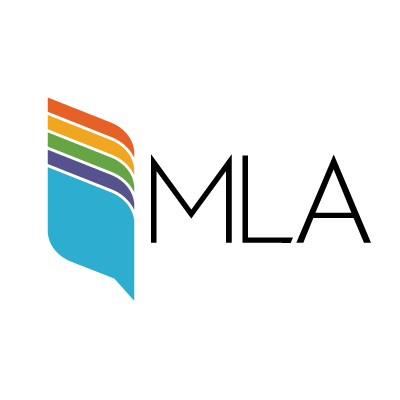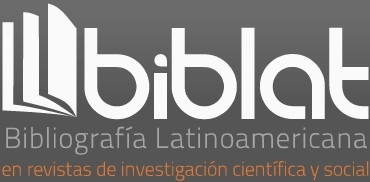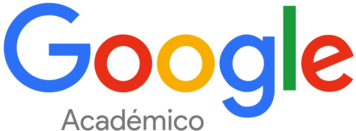Vers la reconnaissance de la subjectivité chez les agents artificiels. Une délimitation du sujet artificiel en sémiotique
DOI :
https://doi.org/10.35494/topsem.2019.1.41.600Mots-clés :
sujets non humains, sémiotique informatique, agents interactifs, intelligence artificielleRésumé
L’apparition constante d’agents artificiels qui interagissent avec
nous (par exemple depuis les centres d’attention téléphoniques
et les applications pour les téléphones portables), de même
que leurs différents rôles au niveau des tâches quotidiennes
(de la simple obtention d’information jusqu’à la suggestion
d’activités ou la résolution de problèmes complexes), nous fait
oublier le statut même de ces agents dans notre vie de tous les
jours. Au fur et à mesure où nous nous habituons à ces agents,
nous cessons de nous demander qui sont-ils. Des choses ? Des
outils ? Voire des sujets ? Cet article argumente que ces agents
constituent, en effet, des sujets sémiotiques ayant atteint une
subjectivité chaque fois plus complexe, tout en étant délimitable,
et c’est précisément ces agents délimités que l’auteur
nomme des sujets artificiels.
Téléchargements
Références
AAMOTH, Doug (9 de junio 2014). “Interview with Eugene Goostman, the Fake Kid Who Passed the Turing Test”. Time. Disponible en:
http://time.com/2847900/eugene-goostman-turing-test/
AARONSON, Scott (12 de junio 2014). “My Conversation with ‘Eugene Goostman,’ the Chatbot that’s All Over the News for Allegedly Passing the Turing Test”. The Blog of Scott Aaronson. Disponible en: https://www.scottaaronson.com/blog/?p=1858
CÁMARA FEDERAL DE CASACIÓN PENAL ( 18 de diciembre 2 014). Causa ccc 68831/2014/cfc1. Capital Federal, Ciudad Autónoma de Buenos Aires. Disponible en: http://www.saij.gob.ar/descarga-archivo?guid=rstuvwfa-llos-comp-uest-o14261110pdf&name=14261110.pdf
COECKELBERGH, Mark (2015). “Artificial agents, good care, and modernity”. Theoretical Medicine and Bioethics, vol. 36, núm. 4, pp. 265-277.
COPELAND, Jack & PROUDFOOT, Diane (2011). “Alan Turing, Father of the Modern Computer”. The Rutherford Journal. The New Zealand Journal for the History and Philosophy of Science and Technology, núm. 4. Disponible en: http://www.rutherfordjournal.org/article040101.html
CORTE SUPREMA DE JUSTICIA (26 de julio de 2017). Radicación núm. 1700122130002017-00468-02. Bogotá, D.C. Disponible en:
https://redjusticiaambientalcolombia.files.wordpress.com/2017/07/habeas-corpus-oso-chucho.pdf
DORRA, Raúl (julio-septiembre 2016). “Alteridad y projimidad: para una semiótica del cuidado”. Elementos, núm. 103, vol. 23, pp. 3-12. Disponible en: http://elementos.buap.mx/num103/pdf/Elem103.pdf
GASCA SALAS, J. (2007). “Alteridad, corporalidad social del sujeto y politicidad” (Artículos y Miscelánea). Mundo Siglo XXI. Revista del Centro de Investigaciones Económicas, Administrativas y Sociales del Instituto Politécnico Nacional, núm. 8, pp. 97-108.
GONZÁLEZ DE REQUENA FARRÉ, Juan Antonio. (2017). “Fronteras del sujeto. Un enfoque liminar de la subjetividad lingüística”. Lenguaje, núm. 45, vol. 1, pp. 89-113.
HARARI, Yuval Noah (2016). Homo Deus: breve historia del mañana. México: Peguin Random House.
HERNÁNDEZ, Isauro (1963). “La psicología terapéutica rogeriana”. Revista de Psicología, núm. 8, pp. 173-179.
IBM (2011a). “A Computer Called Watson”. ibm 100. Icons of Progress. Disponible en: http://www03.ibm.com/ibm/history/ibm100/us/
en/icons/watson/
___________ (2011b). “Deep Blue”. IBM 100. Icons of Progress. Disponible en: http://www.03.ibm.com/ibm/history/ibm100/us/
en/icons/deepblue/
JURAFSKY, Dan & MARTIN, James H. (11 de octubre 2017) [en preparación]. Speech and Language Processing: An Introduction to Language Natural Processing, Computational Linguistics, and Speech Recognition. Disponible en: https://web.stanford.edu/~jurafsky/slp3/
___________ (2008). Speech and Language Processing: An Introduction to Language Natural Processing, Computational Linguistics, and Speech Recognition. Upper-Saddle River, Nueva Jersey: Pearson/Prentice Hall.
LAUKYTE, Migle (2017). “Artificial agents among us: Should we recognize them as agents proper?” Ethics and Information Technology, núm. 19, pp. 1-17.
LOPATTO, Elizabeth (10 de junio 2014). “The AI That Wasn’t: Why ‘Eugene Goostman’ Didn’t Pass the Turing Test”. The Daily Beast. Disponible en: https://www.thedailybeast.com/the-ai-that-wasntwhy-
eugene-goostman-didnt-pass-the-turing-test
OBERTI, Liliana (2003). “Semiótica de las pasiones y sujeto de conocimiento”. XI Jornadas de Reflexión Académica. Buenos Aires: Universidad de Palermo, pp. 81-83.
PRESS ASSOCIATION (9 de junio 2014). “Computer simulating 13-yearold boy becomes first to pass Turing test”. The Guardian. Disponible en: https://www.theguardian.com/technology/2014/jun/08/
super-computer-simulates-13-year-old-boy-passes-turing-test Press Team at the University of Reading (8 de junio 2014). “Turing Test success marks milestone in computing history”. University of Reading Press Releases. Disponible en: http://www.reading.ac.uk/news-and-events/releases/PR583836.aspx
RICO SULAYES, Antonio (2016). “Las funciones de creencia en la lingüística computacional: una reconsideración de los modos del creer”. Tópicos del Seminario. Revista de Semiótica, Los modos del creer, núm. 36, pp. 139-161.
SAMPLE, Ian & HERN, Alex (9 de junio 2014). “Scientists dispute
whether computer ‘Eugene Goostman’ passed Turing test”. The Guardian. Disponible en: https://www.theguardian.com/technology/
/jun/09/scientists-disagree-over-whether-turing-test-hasbeen-passed
SELLERS, Michael (2013). “Toward a comprehensive theory of emotion for biological and artificial agents”. Biologically Inspired Cognitive Architectures, núm. 4, pp. 3-26.
TURING, Alan M. (1945). Proposed electronic calculator. Report for National Physical Laboratory.
___________ (1950). “Computing Machinery and Intelligence”. Mind, núm. 9, pp. 433-460.
VELOSO, Manuela M. (2002). “Entertainment robotics”. Communications of the ACM, núm. 45, vol. 3, pp. 59-63.
WEIZENBAUM, Joseph (1966). “Eliza–A computer program for the study of natural language communication between man and machine”. Communications of the ACM, núm. 9, vol. 1, pp. 36-45.
___________ (1976). Computer Power and Human Reason: From Judgement to Calculation. Nueva York: W.H. Freeman and Company.
Téléchargements
Publiée
Comment citer
Numéro
Rubrique
Licence

Tópicos del Seminario is licensed under a Creative Commons Reconocimiento-NoComercial-CompartirIgual 4.0 Internacional License.














